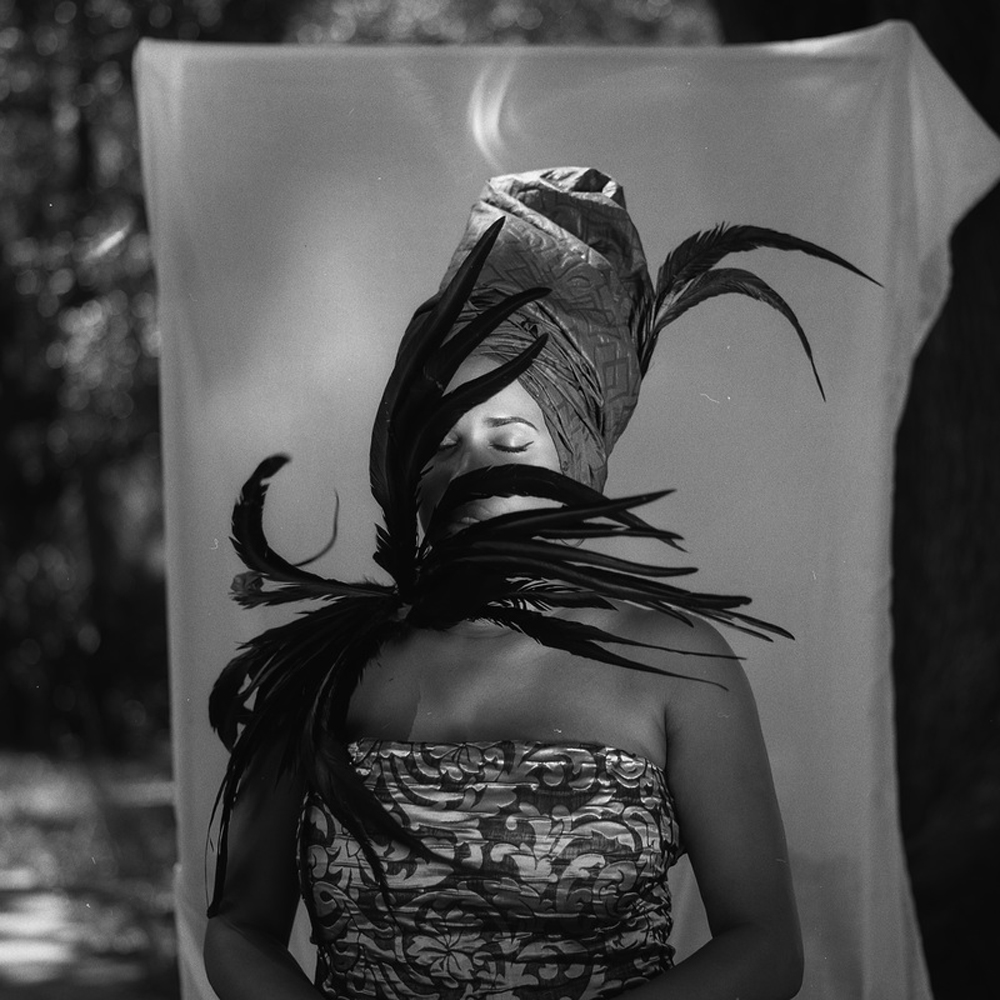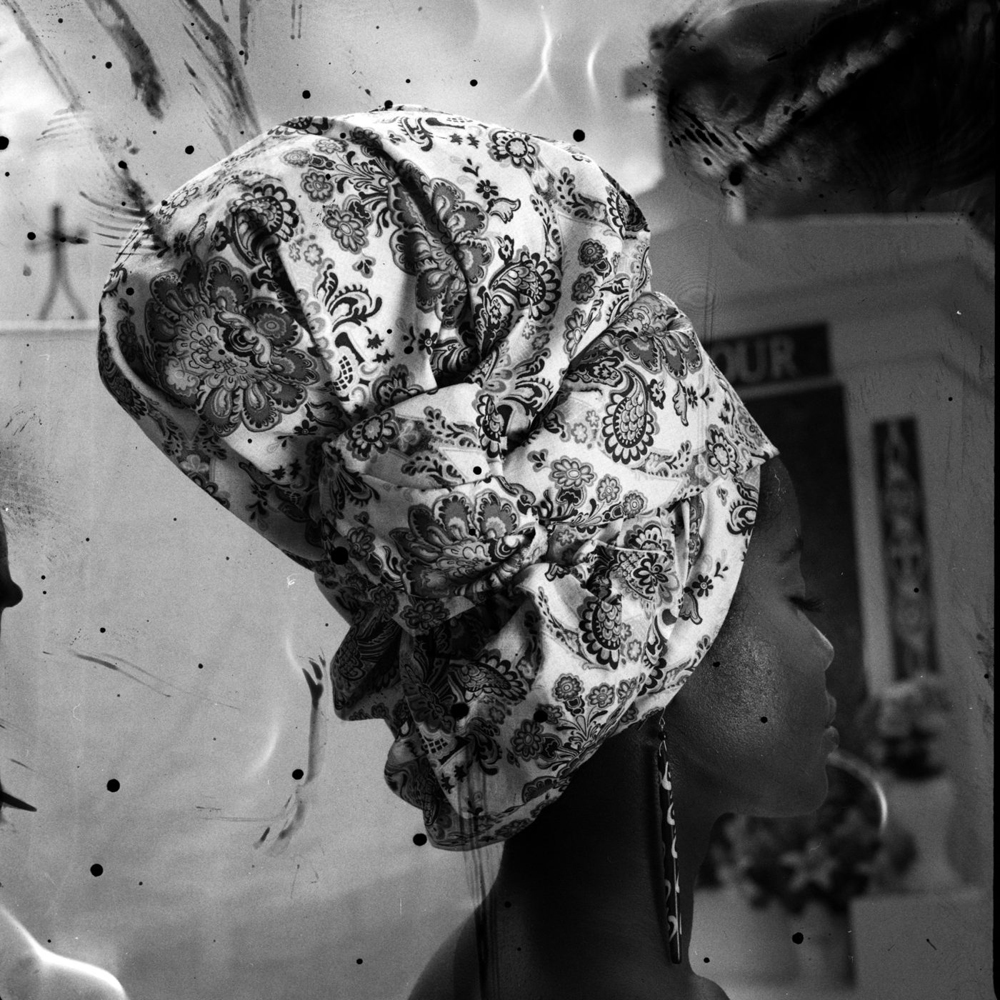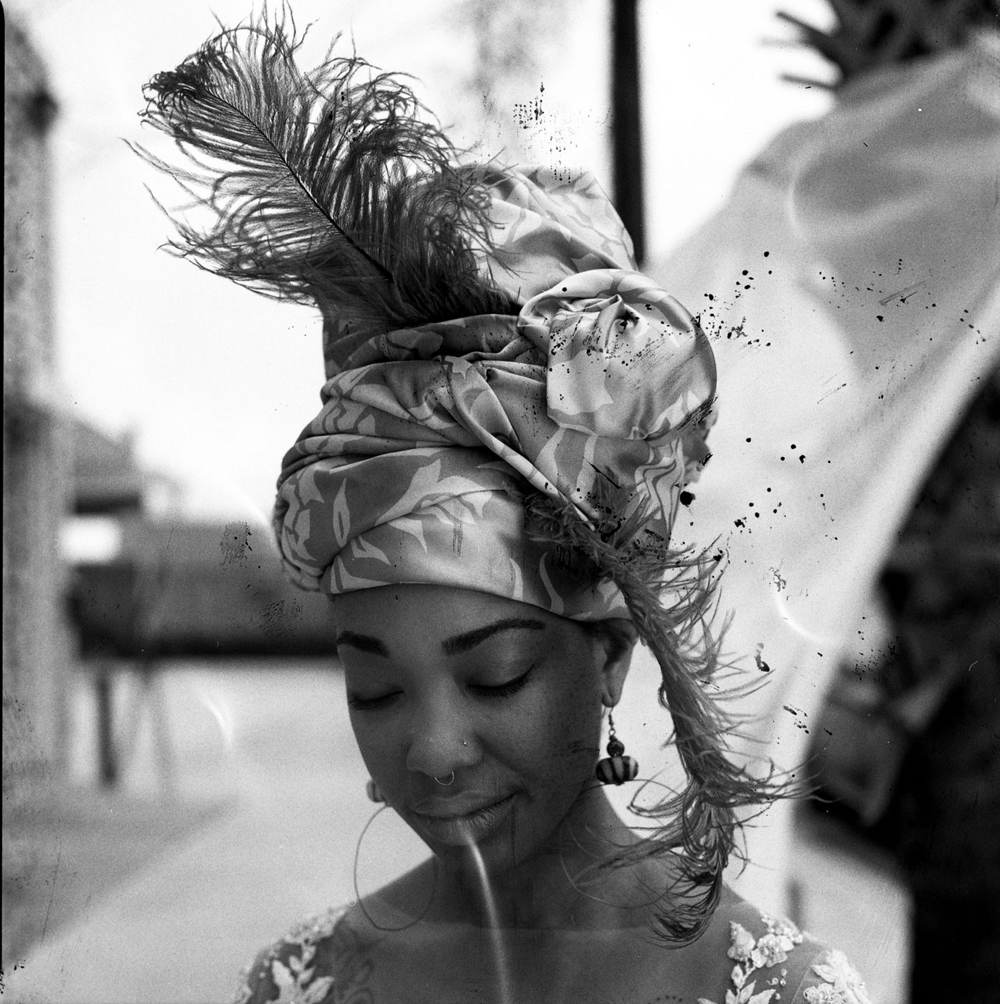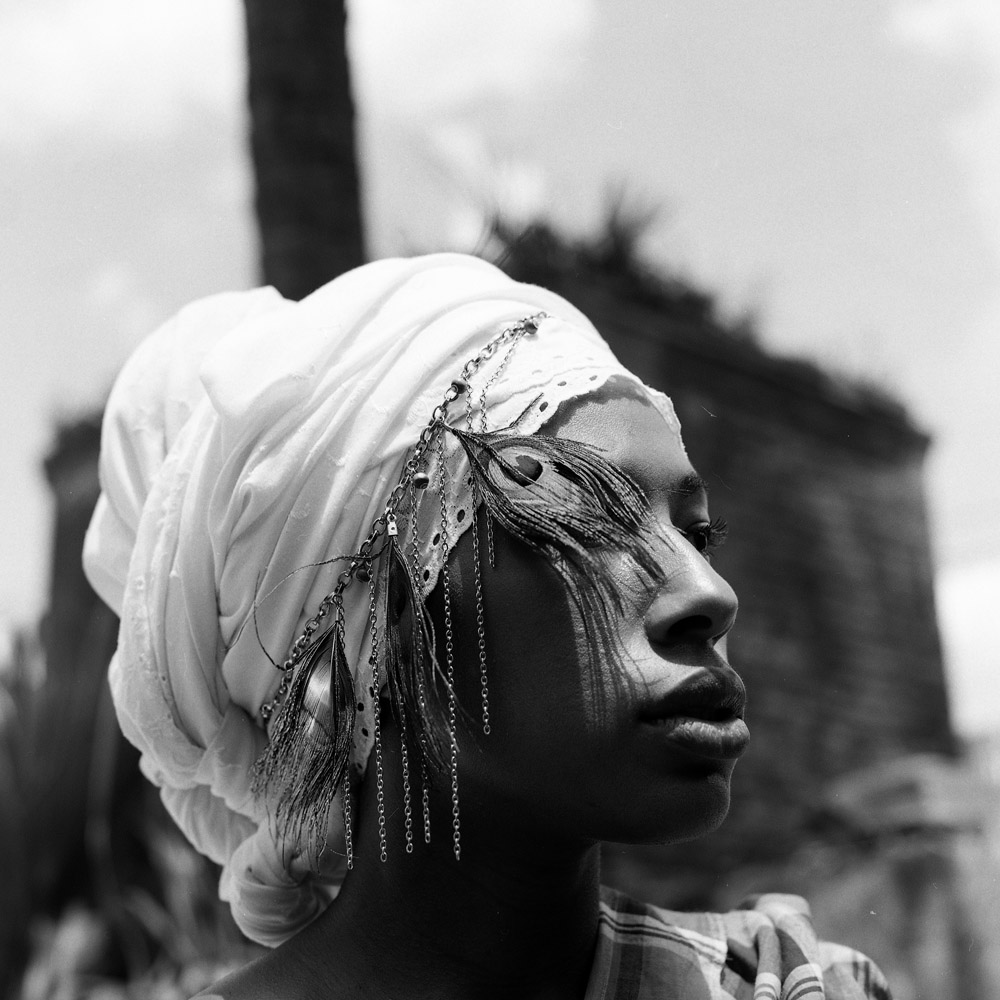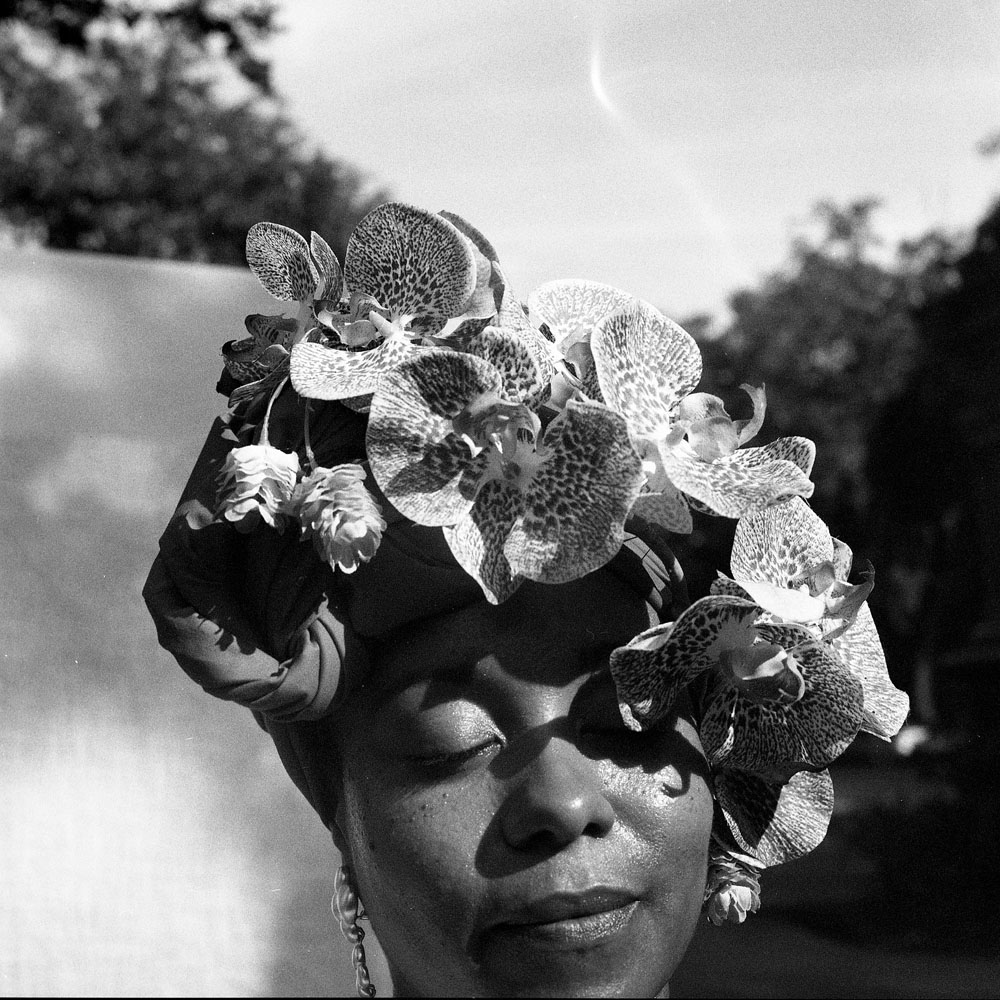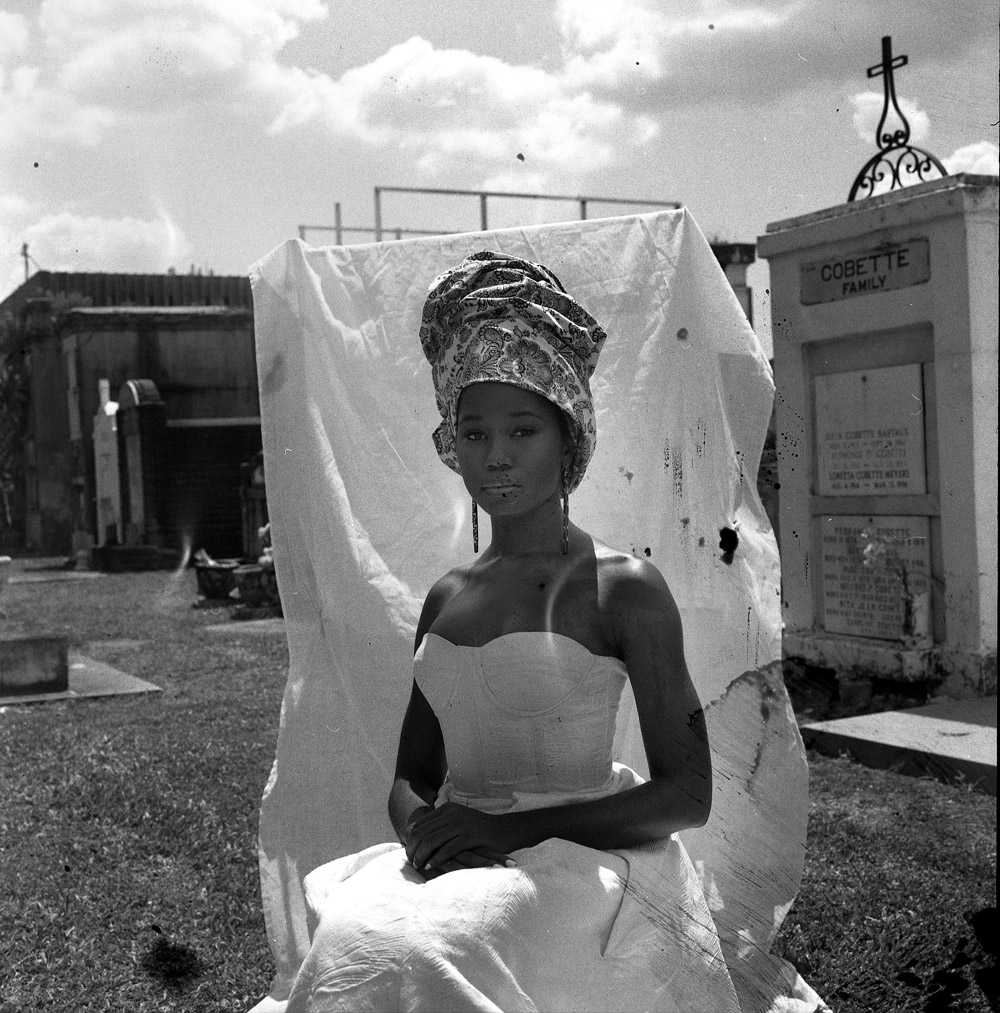Juliana Kasumu: From Moussor to Tignon
 A few weeks ago, I spent time with a Nigerian friend who shared with me some of the amazing head scarves worn in her country for various occasions and I learned that the headwrap has a long history not only in Africa but also in the United States. Juliana Kasumu, a British-Nigerian photographer, based in London recently completed a three-month residency with the Ray Charles Program for African American Material Culture at Dillard University in New Orleans, Louisiana, working with historian, Madame Barbara Trevigne. She was able to explore the history of headwraps worn as both fashion and political statements by women of color and discover connections between Creoles in New Orleans, Louisiana and signares in Senegal, West Africa during the 18th century. The result is her project, From Moussor to Tignon “serving as a reflective investigation into the exoticism of the head-tie and re-appropriation of traditional methods.”
A few weeks ago, I spent time with a Nigerian friend who shared with me some of the amazing head scarves worn in her country for various occasions and I learned that the headwrap has a long history not only in Africa but also in the United States. Juliana Kasumu, a British-Nigerian photographer, based in London recently completed a three-month residency with the Ray Charles Program for African American Material Culture at Dillard University in New Orleans, Louisiana, working with historian, Madame Barbara Trevigne. She was able to explore the history of headwraps worn as both fashion and political statements by women of color and discover connections between Creoles in New Orleans, Louisiana and signares in Senegal, West Africa during the 18th century. The result is her project, From Moussor to Tignon “serving as a reflective investigation into the exoticism of the head-tie and re-appropriation of traditional methods.”
Juliana Kasumu uses conscious imagery to highlight the interconnectivity of women, culture, and fashion. Her subject matter is chosen based on a quest for personal knowledge concerning issues related to Africa and its Diaspora. By interweaving cultural research and stunning portraitures, she is able to express critical ideas with the intent of educating her audience. Photographs by Juliana Kasumu have been exhibited for the use of raising awareness to less spoken narratives of Black women.
After receiving a bachelor’s degree in Visual Communication from Birmingham City University, Kasumu created an on-going series exploring traditional hair statements within the Yoruba tribe in West Africa. Images from the Irun Kiko series have received international acclaim, most recently being awarded the Renaissance Photography Prize 2015 for Best Single Image and making the shortlist for the D&AD Next Photographer Awards. Irun Kiko, based on Kasumu’s final year dissertation, served as the springboard for her career as a visual artist. Kasumu is committed to researching and sharing ideas that promote West African culture through photography, publications, and public programming.
In her most recent body of work, From Moussor to Tignon, Kasumu further expands on her cultural investigations from behind the lens. While serving as the 2016 Olaju International Artist-in-Residence, she has been able to develop both research and traditional, film developing techniques. Working towards reaching a larger audience of women sharing similar stories has been a driving force behind her creative direction. As a contemporary artist, Kasumu provides viewers the opportunity to engage with images that demystify preconceptions of Black women and their bodies.
My identity as a British Nigerian plays a pivotal role in the direction of my photography. I work hard to develop photographs that speak to both me and others who can relate to my ideas. My main aim is to provide information on the important and sometimes forgotten histories that shaped the West Africa we know today, also bringing attention to the effects of colonisation in Africa and the diaspora. Projects such as Irun Kiko, give insight in to a very personal journey of self-discovery and my attempt to uncover truths about a cultural history that was not taught in the schools I attended, or even easily accessible when conducting research. I attempt to bring attention to groups of first generation individuals like myself, often feeling out of place in the country they were born in,trying to make their way back to their motherland
Posts on Lenscratch may not be reproduced without the permission of the Lenscratch staff and the photographer.
Recommended
-
Earth Month Photographers on Photographers: Tyler Green in Conversation with Megan JacobsApril 15th, 2024
-
Luther Price: New Utopia and Light Fracture Presented by VSW PressApril 7th, 2024
-
Emilio Rojas: On Gloria Anzaldúa’s Borderlands: The New MestizaMarch 30th, 2024
-
Artists of Türkiye: Cansu YildiranMarch 29th, 2024
-
Artists of Türkiye: Sirkhane DarkroomMarch 26th, 2024

